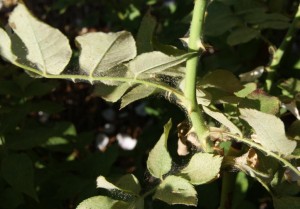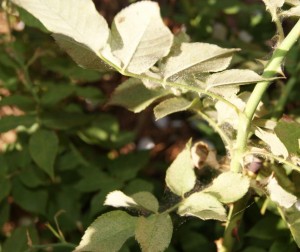Spring is rapidly turning into an early summer. As heat increases so will the incidence of spider mites on ornamental shrubs.
The first indicating factor of damage is a yellow mottling on the leaves of the plant, which is caused by the piercing and sucking mouthparts of the spider mite. As they feed they damage leaf tissue, eventually disfiguring the leaves and causing complete abscission. Additionally, fine webbing will be noticed on the stems and leaves on which the mites will lay their eggs. Although the most obvious damage to the plant is disfigurement, this leaf damage weakens the plant and may lead to eventual death of plants already weakened by other insects or diseases.
Scouting and rapid action is necessary to prevent spider mite damage, since the spider mite life cycle ranges from 5-20 days. The optimum temperature for development of spider mite infestations is 80 ° F.
Spraying broad spectrum insecticides might seem like a good solution, but these insecticides will eliminate the numerous natural predatory insect species which feed on spider mites. The popular insecticide, Carbaryl, has been shown to actually increase mite populations in some studies. One simple, non-toxic solution for spider mite control is to use a forceful stream of water to wash off spider mites and their web-like structures. This would need to be carefully performed to reach all affected parts of the plant, particularly the undersides of the leaves. Repeating this process several times will achieve reasonable mite control. Additional low-toxicity methods include the application of insecticidal soaps and high grade horticultural oils. These need to be applied carefully, since application of these products in high temperatures can damage certain shrub species. Please consult your labels carefully.
As a last resort, if insecticides are needed, the most narrow-spectrum product possible needs to be selected. It is also advisable to rotate insecticides, since mites are known to develop resistance to a particular product when used alone.
For a table of available miticides or to learn more please cosult “Selected Miticide Use for Ornamantal Plants” and “Twospotted Spider Mite”
Submitted by Matthew J. Orwat, Washington County Horticulture Extension Agent
- Woodland Pinkroot Adds Vibrant Color to Spring Landscapes - April 27, 2023
- Easy Care Roses for the Gulf South - April 20, 2023
- Herb Gardening: When Oregano is Flavorless - March 9, 2023



